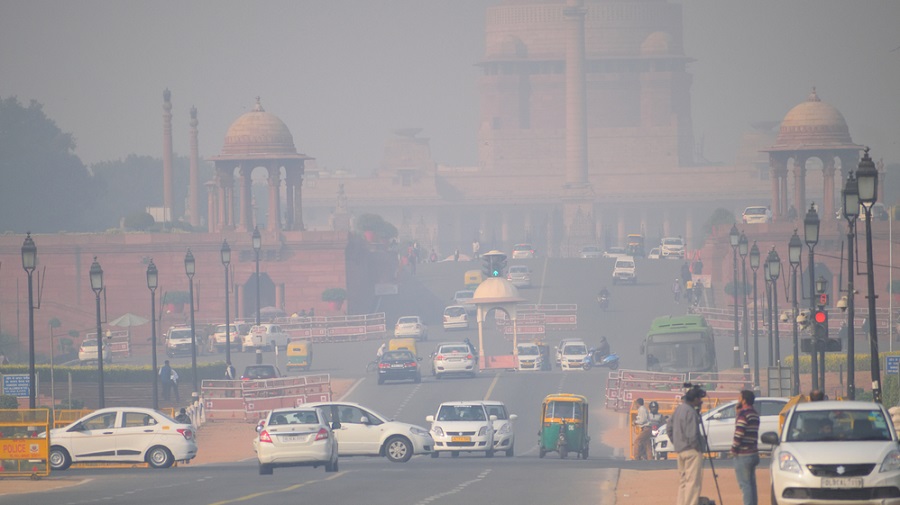Delhi's air quality recorded a marginal improvement on Saturday morning due to favourable wind speed but remained in the "poor" category.
Government agencies said the air quality index (AQI) was likely to improve to the "moderate" category later in the day.
The city's AQI was 263 at 9 am. The 24-hour average AQI was 296 on Friday. It was 283 on Thursday and 211 on Wednesday.
An AQI between zero and 50 is considered "good", 51 and 100 "satisfactory", 101 and 200 "moderate", 201 and 300 "poor", 301 and 400 "very poor", and 401 and 500 "severe".
The central government's Air Quality Early Warning System for Delhi said the air quality in Delhi-NCR was likely to improve further to the "moderate" category on Saturday.
The predominant surface wind direction is northwesterly, and the maximum wind speed was 20 kmph on Saturday, it said.
The central agency said the AQI is likely to deteriorate to the upper end of the "very poor" category between Tuesday and Friday as "unfavourable meteorological conditions" are predicted during that period.
Around 800 farm fire counts were observed over Punjab, adjoining Pakistan and Haryana on Friday, it said.
According to the Ministry of Earth Sciences' air quality monitor, SAFAR, stubble burning accounted for 15 per cent of Delhi's PM2.5 pollution on Friday. The figure was 20 per cent on Thursday, 8 per cent on Wednesday and 3 per cent on Tuesday.
SAFAR also said "energetic" surface winds were likely to influence the AQI positively on Saturday.
The minimum temperature settled at 8.5 degrees Celsius on Saturday. It was 7.5 degrees Celsius on Friday the lowest in the month of November in 14 years, according to the India Meteorological Department (IMD).
Calm winds and low temperatures trap pollutants close to the ground, while favourable wind speed helps in their dispersion.
Delhi's ventilation index -- a product of mixing depth and average wind speed was around 13,000 square metre per second on Saturday and is likely to be 6,000 square metres per second on Sunday.
Mixing depth is the vertical height in which pollutants are suspended in the air. It reduces on cold days with calm wind speed.
A ventilation index lower than 6,000 square metres per second, with an average wind speed less than 10 kmph, is unfavourable for dispersal of pollutants.











